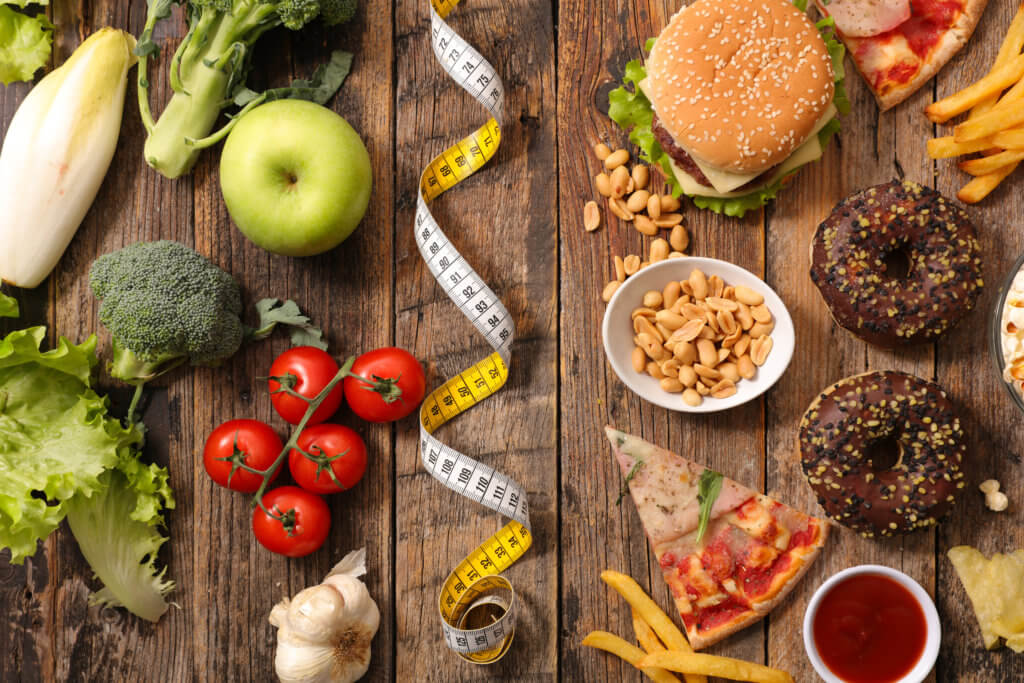“Intuitive eating” has seen a boost in popularity in recent years. The anti-diet approach to eating has been welcomed with open arms, especially by those who’ve struggled constantly with dieting and eating disorder patterns. The idea is to prioritize listening to your body and building a healthier relationship with food and yourself. Now that it has made its way to social media, however, the true definition has been watered down by some to “just freely eating as you want to.” This isn’t what it was designed for.
In 1995, dietitians Evelyn Tribole and Elyse Resch coined the term “intuitive eating.” Their goal was to help healthcare practitioners provide better care to people struggling with weight management and disordered eating. At its core, the concept is meant to empower people to listen to their body’s needs (and trust them), to eat enough, and to tap into innate hunger and fullness cues.
There are 10 principles of intuitive eating, and they can all be used together or separately depending on where on the journey someone is:
1. Reject the diet mentality
This does not mean to eat whatever you want. “Dieting” implies a short-term shift in eating that has an expiration date. Usually, they are short-lived because they are not sustainable long-term. Dieting for many can look like a drastic reduction in caloric intake and cutting out food groups.
But what happens once you let go of the diet? Go back to usual? Time and time again, studies have shown that weight loss that happens from an extreme regimen is more likely to come back with a vengeance. By rejecting the diet mentality entirely, you leave room to create a sustainable way of eating.
2. Honor your hunger
Listening to your body when you are hungry may sound pretty simple, but that’s not always how it goes for people. Being able to understand when your body needs to be fueled and actually following through with it can be very hard for people stuck in a hardcore diet mentality.
3. Make peace with food
There’s good food and bad food, right? I find this to be a flawed way of thinking. Obviously, there are foods that provide lots of vitamins, minerals, and beneficial nutrients, while others simply do not.
Some foods are healthier than others, that is just a fact. However, once you get into the weeds of “good” and “bad” and what you “should eat” and “shouldn’t eat,” it becomes a slippery slope. Food can feel like war for a lot of people when, in reality, you should be able to enjoy a piece of cake with your family and move on with your day.

4. Challenge the ‘food police’
People often think dietitians are the “food police,” as if we are walking around waiting to scold someone for not eating broccoli. However, this point is talking about the inner food police. The voice that tells you to “not eat a sandwich for lunch because you already had carbs at breakfast.” Or the one that tells you that you ruined your whole day of eating because you ate a cookie that someone offered you.
It’s important to check with yourself to make sure that the negative beliefs you have about food and who you are don’t overcome you.
5. Feel your fullness
Ever have trouble feeling full? Or maybe you feel full physically but aren’t satisfied mentally? One of the biggest reasons for overeating and binging is that people fail to take the time to listen to themselves.
6. Discover the satisfaction factor
Food is not just for staying alive, we eat to feel satisfied as well. This is why it is important to eat enough for your needs and to not restrict too much. Eating protein, carbs, fats, and fiber in your meals is a sure way to feel satisfied after eating.
7. Cope with your emotions
Leading a healthy lifestyle is about more than people able to physically go through the motions of eating well and working out. At times, people can neglect the importance of mental health when it comes to eating. A big reason that people may over or undereat is poor emotional well-being. Address your stress regularly so that you don’t seek food or other external things for support.

8. Respect your body
All of these principles help you to better do this one. However, this one encourages you to accept your makeup. Whether it be your nose, hair, height, or build. Specifically with accepting your build, it’s important to know that you won’t ever be able to out-diet or out-exercise something like height!
9. Exercise
There are so many other reasons to exercise that have nothing to do with burning calories. One of them is being able to use it as a tool for improving your mental health. Oftentimes, exercise can be viewed as a chore when it is actually a celebration of your body. Find exercises you like that have a positive impact on you and keep going.
10. Honor your health
This one encourages you to eat a balanced, nourishing diet that respects your health needs. Eat an abundance of fruits, vegetables, proteins, healthy fats, and whole grains while also not denying yourself a treat every single time.

Bottom Line
Intuitive eating has become really popular among wellness influencers, particularly aimed at crowds that have come from a history of disordered eating and cyclic dieting. The concept has helped thousands, but the true meaning of it has somewhat been lost in a sea of online misinformation. The 10 principles are meant to guide you through what intuitive eating actually is and possibly help you apply at least one into your life if you are not already.

